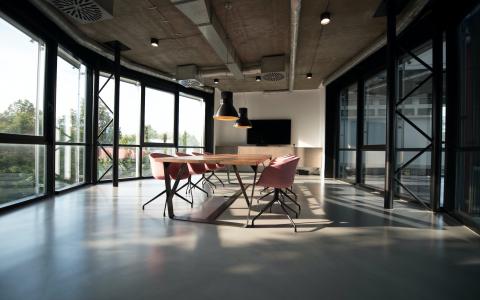
Flexibility is a skill everyone has had to sharpen and fine-tune this year, from couples postponing weddings to airlines waiving change fees and companies taking crash courses on how to work virtually. Now roughly eight months into the global coronavirus pandemic, many are learning just how far they can bend — and that bouncing back will take some time and even more creativity. The same holds true for companies readying to return to office workplaces. While remote work may work for some and the lower-cost structure initially may be appealing, companies have also learned its limitations from practical experiences, too. Research has found that team creativity thrives when employees can collaborate live in real time, and lower levels of creativity can equate to lower overall profitability over time.
Many younger employees, who have the most to gain from mentorship and learning opportunities that come with working in a shared office, particularly want to come back. According to an analysis on the future of work by Cushman & Wakefield, 70% of Gen Z and 69% of millennials surveyed reported challenges while working from home.
With proper health measures and new guidelines in place, employees are slowly but surely returning to offices for the face-to-face collaboration, culture and work-life balance they’ve been missing while staying home. Looking ahead, office landlords must be more flexible as well to meet companies where they are and help get them where they want to be. This need for flexibility — in terms of the size of the office and what is included, length of leases and the role of the landlord — was already an evolving trend in recent years, thanks to the popularity of coworking operators such as WeWork, Industrious and others.
Now a new blueprint is emerging for the next-generation office model that stands to benefit both parties: enterprise flex.
A green shoot for the post-Covid-19 world, an "enterprise flex" deal blends the most favorable elements of traditional office leasing and modern coworking through terms more companies are comfortable with, especially given the unpredictability of the current environment. In other words, a landlord may have to invest more in capital expenditures early on, but over time can earn a greater share of revenue compared to a conventional lease, while also having the ability to reconfigure the space for another user down the road if needed. Meanwhile, companies can avoid the pitfalls of high costs and inherent security and health risks of true coworking environments. Key differentiators of the enterprise flex office space include:
• Level of commitment. The average length of a lease term typically varies based on the market location and its conditions with more competitive areas requiring longer leases. But generally, in my experience, a short-term lease is around three years, and long-term leases range from seven to 10 years or more. On the other hand, coworking typically is less than a year with rates often available on a monthly and daily basis. Enterprise flex deals typically average between one to three years, offering companies the ability to maintain their own uniquely branded and securely confidential space with flexibility as employee size could fluctuate or teams could relocate in a hub-and-spoke design.
• Level of service and amenities. There is a premium cost to the convenience, funky design features and limitless coffee of popular coworking brands, while leasing a less-expensive empty shell requires more leg work for the tenant to source all the furniture, supplies and caffeine needed to keep an office running. In the enterprise flex model, the landlord becomes more involved by building out move-in-ready spec suites, providing property-wide amenities (such as outdoor courtyards or conference facilities when tenants need to spread out) and other essentials to support business goals and attract talent. Think Wi-Fi and coffee maker, without going full-tilt to kegerators and kombucha.
• Rates. Because enterprise flex represents a blend of these models, the rental rates should also fall between traditional long-term leases and the more expensive coworking agreements. Secondary markets in particular are underrepresented, and present potential opportunities for landlords and investors who can quickly build out supply and get ahead of the pack.
While the increase in remote work — at least a few days a week — is likely here to stay, the inherent value of the shared office environment isn't going away, either. Companies and landlords who stay agile, able to adjust to changing needs of employees and ready to leverage new, more flexible models, will help both parties stay best positioned for success — regardless of what the years ahead may bring.
This article originally appeared on Forbes.



